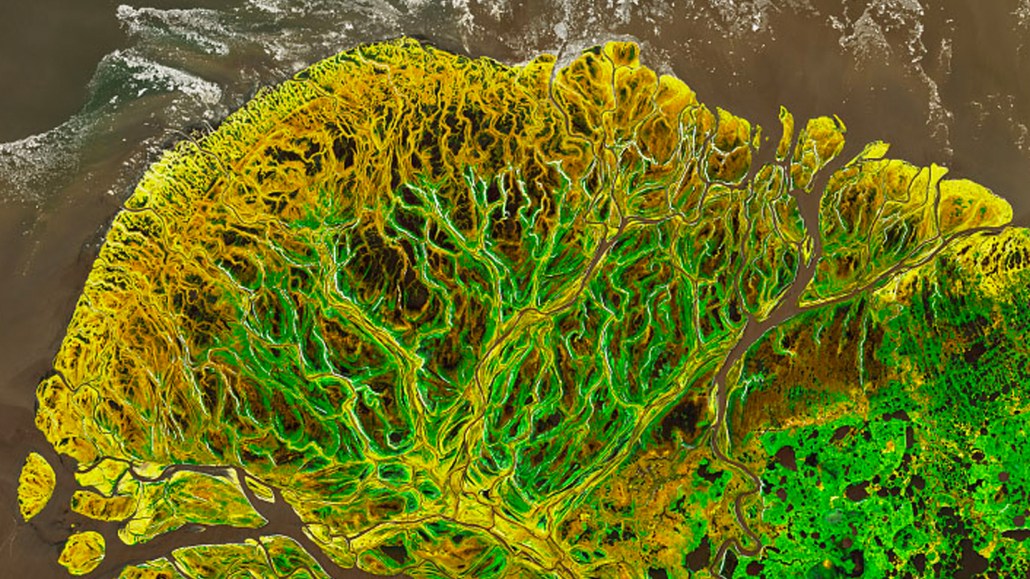A stunning visualization of Alaska’s Yukon Delta shows a land in transition
More northern parts of the Arctic are becoming greener

In this visualization, the northern lobe of Alaska’s Yukon Delta appears as a tangle of sedge meadows (colored yellow-brown), with willow shrublands (green) lining networks of river channels flowing toward the Bering Sea. Sediment-rich waters are shown in their natural browns.
Joshua Stevens/NASA Earth Observatory, USGS







